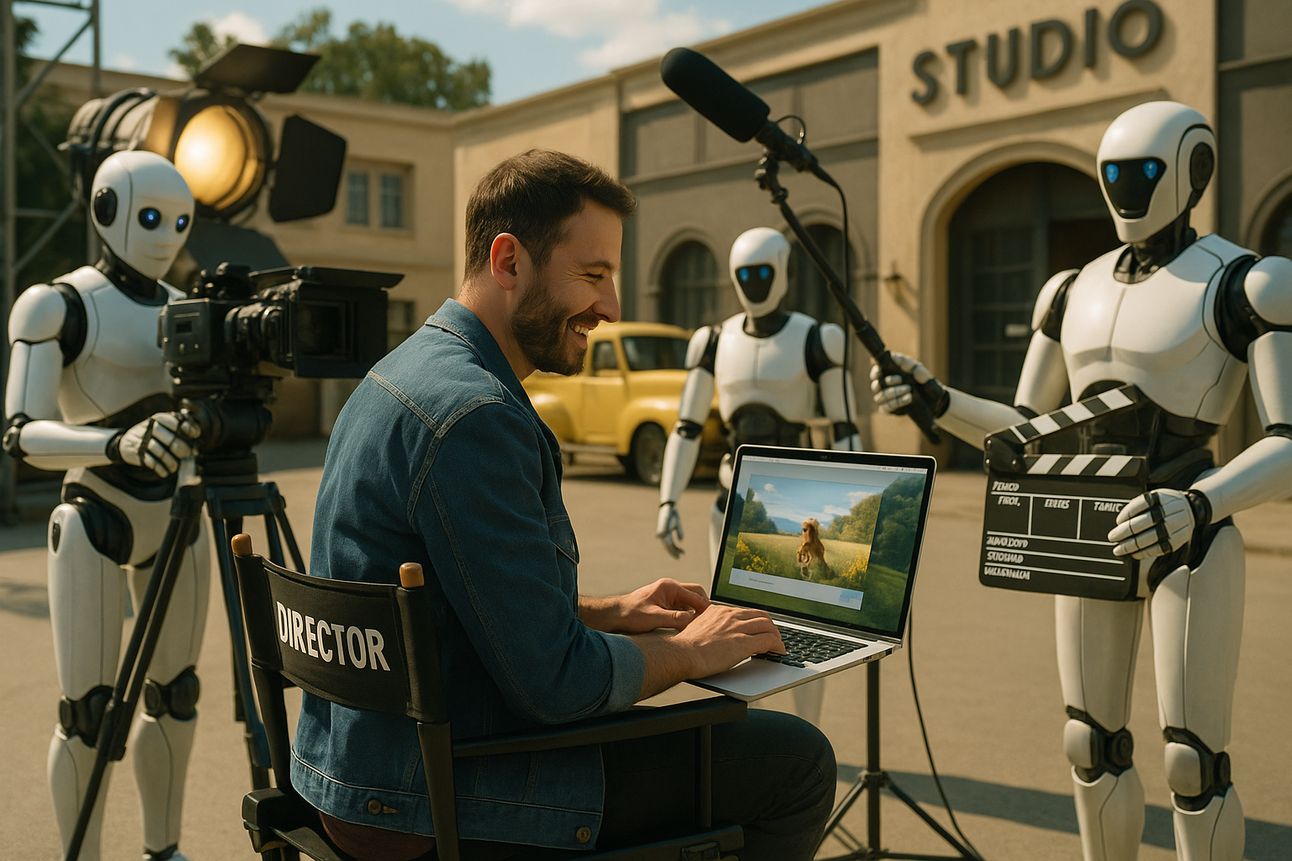- XcessAI
- Posts
- Lights, Camera, Prompt
Lights, Camera, Prompt
The Text-to-Video Revolution

Welcome Back to XcessAI
Hello AI explorers,
We’ve watched AI go from writing emails to winning chess games. From painting dreamscapes to generating code. From answering questions to walking on two legs.
But now, something truly cinematic is happening.
AI can generate video — not just clips, but fully rendered, dynamic scenes — from nothing more than a line of text.
The camera just became a keyboard. And the director? That could be you.
From Words to Cinematic Worlds
Imagine typing:
“A golden retriever runs through a field of sunflowers in slow motion as the sun sets behind the hills.”
Seconds later, you’re watching it happen — petals flying, camera panning, golden light bathing the scene.
This isn’t stock footage.
It’s not animation.
It’s AI-generated video, powered by language models trained on massive visual datasets.
We’re witnessing the rise of text-to-video generation — and it may be the most mind-blowing leap yet in AI’s creative evolution.
What Is Text-to-Video AI?
Text-to-video models use the same architecture behind image generators like DALL·E and Stable Diffusion — but extended to space, motion, and time.
These models take in a written prompt, predict how a video might unfold based on patterns they’ve learned, and render a sequence of frames that look very real.
The leaders in the space?
Veo (Google DeepMind) — unveiled at Google I/O 2024, capable of 1080p, minute-long videos, and cinematic camera movements.
Sora (OpenAI) — viral demos showing surreal, photo-realistic scenes with multi-shot continuity.
Kling (ByteDance/China) — a fast-moving rival focused on character consistency and human movement.
RunwayML — used in creative industries for short-form and stylized video generation.
Each is pushing the limits of what it means to create.
According to Runway's internal data, creators using its Gen-2 model have already published over 1 million AI-generated videos, many of which have gone viral on platforms like TikTok and Instagram.
The global text-to-video AI market was valued at $160 million in 2024, and it’s projected to explode to $1.4 billion by 2031 — a 36% compound annual growth rate.
What Can It Actually Do?
You can now type a sentence and produce footage that would once have taken a film crew days to shoot.
AI-generated video can:
Visualize a script or ad concept before filming
Turn ideas into trailers, mood boards, or storyboards
Generate short-form content for social media at scale
Let indie filmmakers create scenes they couldn’t afford to shoot
Help marketers, educators, and entrepreneurs tell richer stories
It’s not just animation — it’s near-cinematic realism on demand.
Why This Is a Big Deal
Text-to-video isn’t just another creative tool — it’s a paradigm shift.
It makes high-end video creation accessible to small teams and solo creators
It slashes production costs and lead times
It enables real-time A/B testing of video content
It levels the playing field in industries that were limited by budget, crew, or location
And perhaps most importantly:
It gives storytellers, educators, marketers, and even hobbyists a new language of creation — the written word.
But It’s Not Perfect… Yet
There are real limitations — and real concerns.
Motion artifacts: Some generated videos still have jittery or unnatural movement
Consistency: Character and scene continuity across multiple shots is a work in progress
Ethical risk: Fake footage, misinformation, consent violations, and digital impersonation
As this technology improves, guardrails and verification tools will become critical.
Because with great creativity… comes great potential for chaos.
Real Business Applications Are Already Here
This isn’t a tool for “someday.” It’s already in early use across industries:
Marketing & Advertising: Brands can visualize ad concepts instantly, or generate dozens of content variants for testing.
Education: Teachers can bring complex concepts to life with dynamic, personalized visual explainers.
Product Demos & Real Estate: Interactive mock-ups and virtual walkthroughs without physical prototypes.
You don’t need a crew. You need a prompt.
For instance, edtech startup Headway reported a 40% increase in ROI on digital ads after switching to AI-generated video, thanks to faster iterations and lower production costs.
And while adoption of AI video generation is growing, a report by GenerateMore indicates currently only about 18.6% of marketing teams are utilizing these tools for video and audio content creation.
Final Thoughts: The Next Director Is You
AI has written books. It’s designed images. It’s scored music.
Now it’s making movies.
Text-to-video generation changes the rules of content creation — not by replacing human imagination, but by accelerating it.
Soon, entire films could be storyboarded in minutes.
Marketing campaigns could be drafted before the coffee’s even cold.
A founder’s pitch, a teacher’s lesson, a child’s bedtime story — all brought to life with words alone.
With over 80% of global internet traffic projected to be video by 2027 (Cisco), the ability to generate compelling footage with a few keystrokes could redefine the very nature of digital communication.
The future of video is programmable.
And the director’s chair is wide open.
Until next time,
Stay curious. Stay creative.
And keep exploring the frontier of AI.
Fabio Lopes
XcessAI
P.S.: Sharing is caring - pass this knowledge on to a friend or colleague. Let’s build a community of AI aficionados at www.xcessai.com.
Don’t forget to check out our news section on the website, where you can stay up-to-date with the latest AI developments from selected reputable sources!
Read our previous episodes online!
Reply